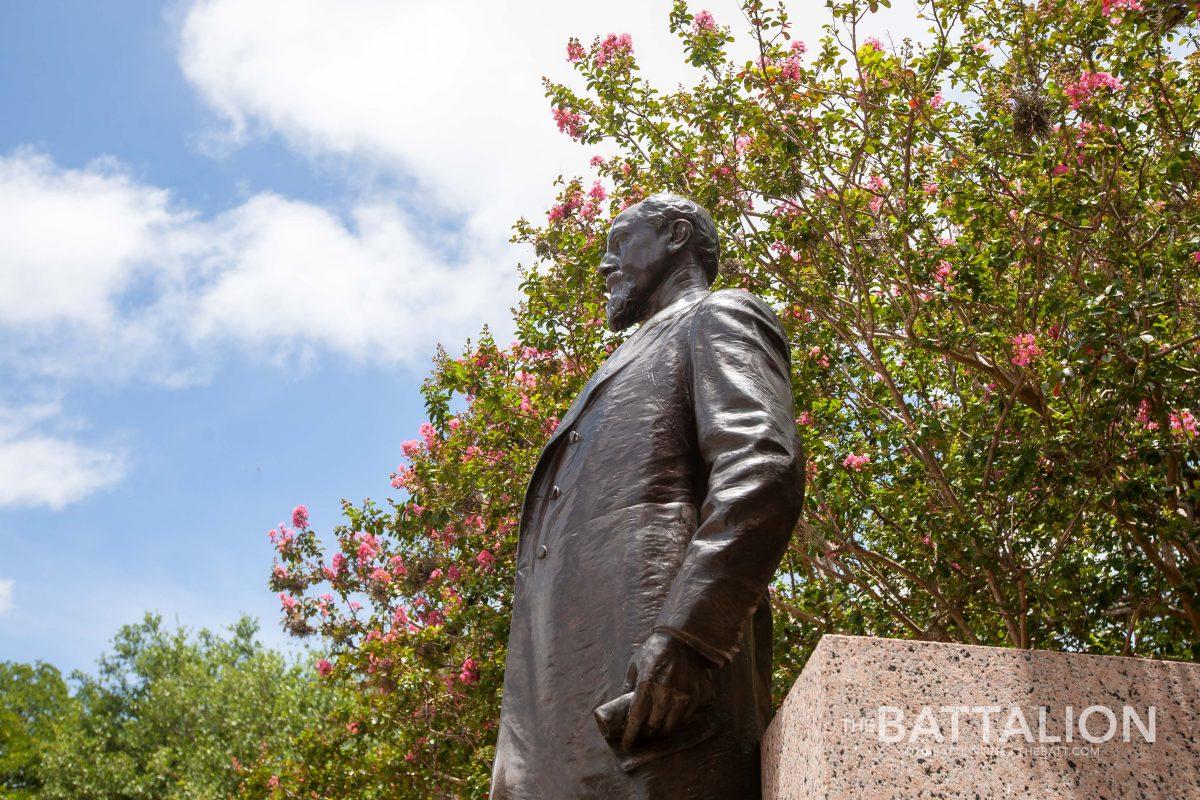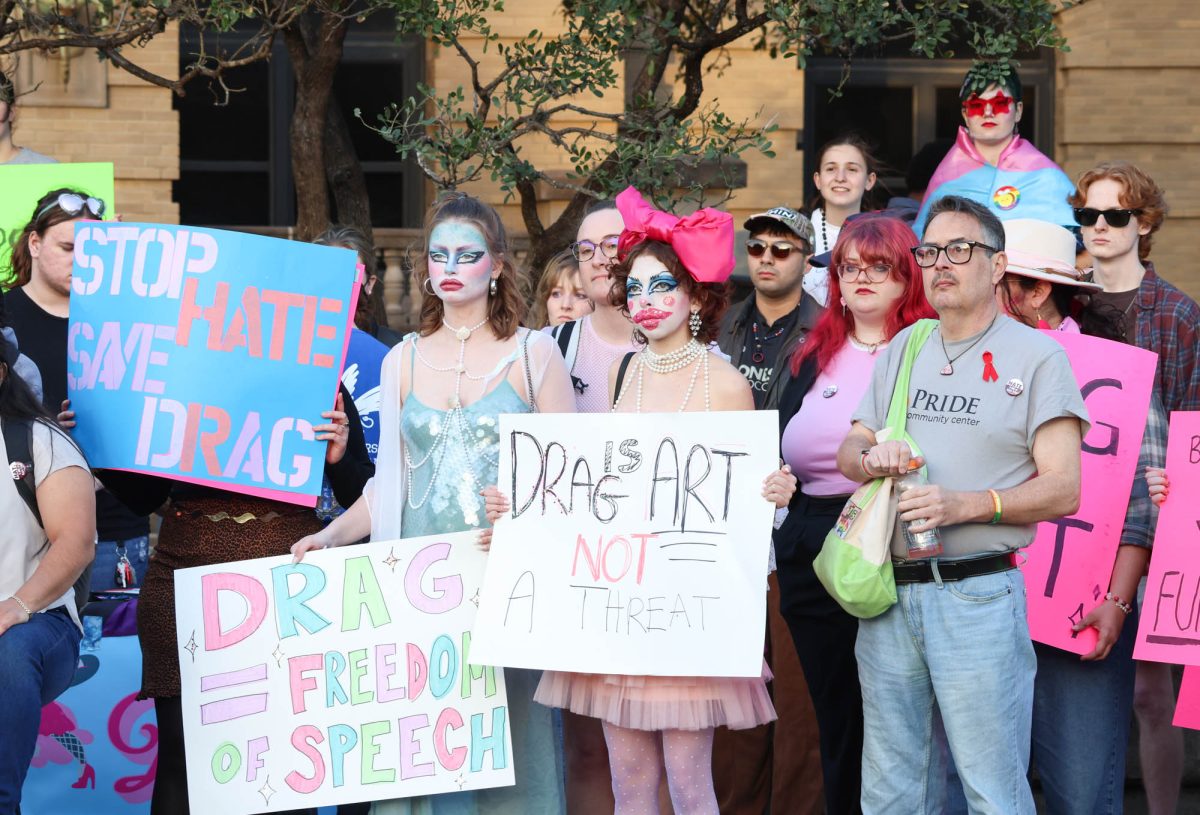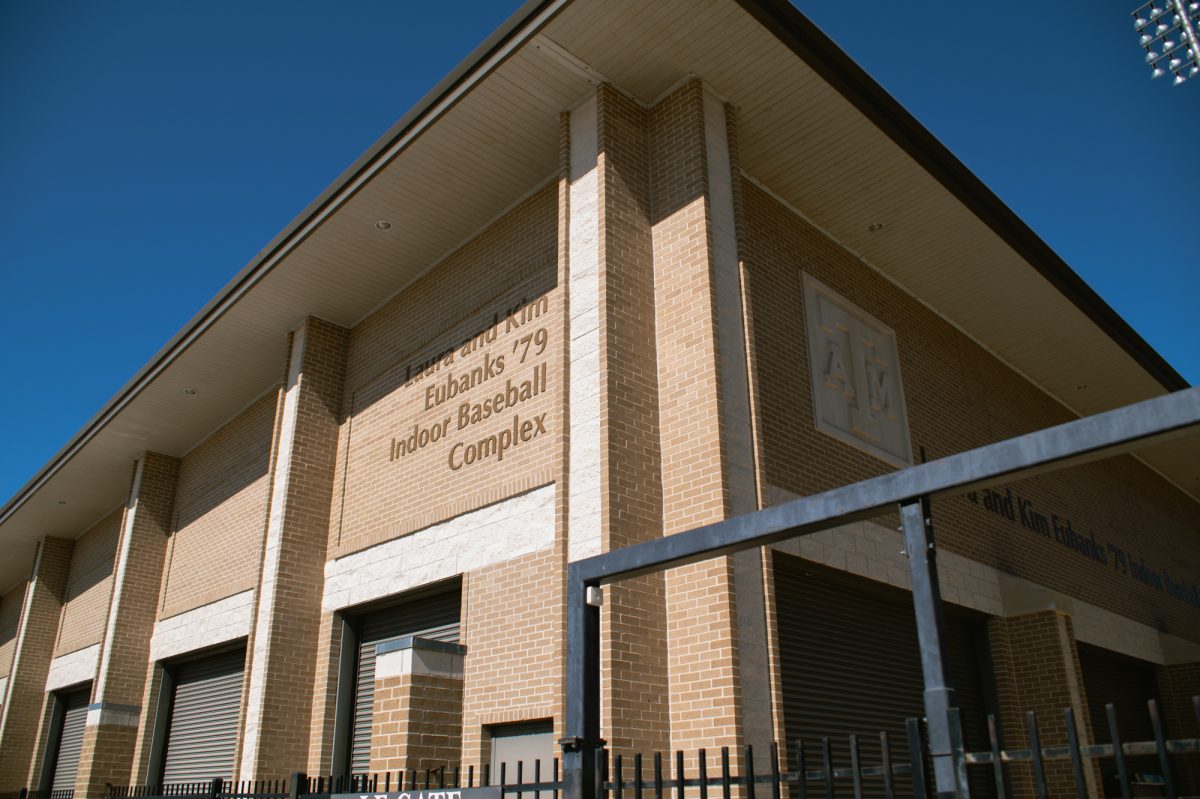In early June, Texas Rep. John Cyrier, Class of 1995, requested an opinion from Texas Attorney General Ken Paxton on the potential move of the Lawrence Sullivan Ross statue in Academic Plaza on Texas A&M’s campus.
The statue of Ross, erected in 1918, has been the center of campus debate for decades and has attracted protesters both for and against the monument several times over the summer. Ross was a Confederate general, governor of Texas and served as President of A&M from 1891-1898.
According to an opinion filed on August 7, Paxton said only the Texas Legislature has the jurisdiction to move the statue due to regulations in Texas Gov. Code 2166. According to section 2166.5011, a statue qualifies as a monument or memorial if it is on public property and if it honors a state citizen for military or war-related service.
“The Legislature appropriated $5,000 in 1917 to fund the statue of ‘General Lawrence Sullivan Ross,’ suggesting that the Legislature funded the statue at least in part to honor Ross for his military or war-related service,” Paxton’s opinion states.
Furthermore, Paxton’s opinion states only the legislature can move a monument or memorial on college campuses unless construction is necessary.
“Pursuant to subsection 2166.5011(c), Texas A&M University may move the Ross statue if needed to accommodate construction, repair, or improvements to the surrounding property, but if permanently removing the statue, the University must relocate it to a prominent location,” Paxton’s opinion states.
According to the Texas Tribune, the opinion is nonbinding legal guidance and cannot resolve actual disputes.
A&M System Chancellor John Sharp agreed with Paxton’s opinion in a response and stated that A&M system attorneys’ understanding of the opinion does not allow the statue to be moved at all, unless construction warrants its removal.
“Based on the Attorney General’s ruling, the statue of Lawrence Sullivan Ross cannot be moved by anyone at Texas A&M University, including the Board of Regents,” Sharp said in a statement. “Our attorneys’ understanding is the opinion does not allow Texas A&M University to move the statue into the Cushing Memorial Library and Archive. In fact, it cannot be moved at all unless a building is built on the statue’s site and then it must be moved to an equally prominent site.”
Paxton’s opinion states that because the Legislature has the authority to remove the statue, they have the jurisdiction to approve a university request to move the statue.
The A&M Student Government Association opened a survey from June 12 to June 30 to gauge student opinions on the future of the Sullivan Ross statue and received 22,824 responses. According to the student survey summary released on July 8, over 50 percent of students who identified themselves as Black, Asian, International and Hispanic/Latinx said they were “very unlikely” to support no change to the statue.
Following the release of the survey’s findings, A&M President Michael Young announced a 45-person Commission on Diversity, Equity and Inclusion that has been charged to make a recommendation on the statue as well as several other topics. The commission will provide their findings to Young and the A&M Board of Regents by Oct. 30.
Sharp has been vocal about his support for the statue, as seen in this 2018 letter to The Battalion, but said he supports the Commission on Diversity, Equity and Inclusion.
“The President’s Commission has important work to do to make Texas A&M University even greater. We all should put our energy toward that goal,” Sharp said in a statement.
Legislature must approve any relocation of A&M’s Sul Ross statue, Texas Attorney General says
August 8, 2020
Photo by Photo by Meredith Seaver
Sully
0
Donate to The Battalion
$1765
$5000
Contributed
Our Goal
Your donation will support the student journalists of Texas A&M University - College Station. Your contribution will allow us to purchase equipment and cover our annual website hosting costs, in addition to paying freelance staffers for their work, travel costs for coverage and more!
More to Discover










